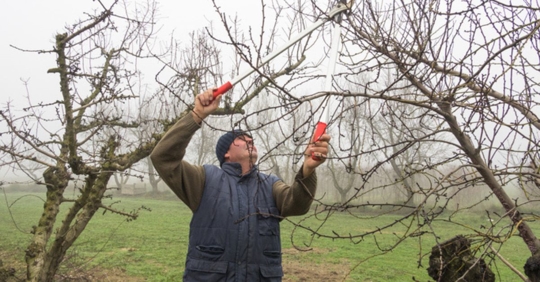As winter blankets the landscape in cold, it's easy to assume that nature's dormant state means less concern for your trees. However, winter tree care is a crucial aspect of maintaining a healthy, vibrant landscape. In this blog post, we'll explore essential winter tree care tips to ensure your trees withstand the cold months and emerge thriving when spring arrives.
1. Mulching
Applying a layer of mulch around the base of your trees serves as a protective barrier against temperature extremes. Mulch helps insulate the soil, preventing rapid temperature fluctuations that can harm tree roots. Additionally, it conserves moisture, which is vital during winter when trees may face challenges in accessing water from frozen soil.
2. Hydration Matters
While trees don't actively grow during winter, they still require moisture to survive. If winter brings dry conditions, consider watering your trees periodically, especially younger or newly planted ones. Be cautious not to overwater, as excess moisture combined with freezing temperatures can lead to root rot.
3. Protecting Young Trees
Young trees, particularly those with thin bark, are more susceptible to damage from winter weather. Wrap the trunks of young trees with a protective material like burlap to shield them from temperature extremes and prevent sunscald. Sunscald occurs when temperature fluctuations cause the bark to warm during the day and freeze at night, leading to cracking and damage.
4. Pruning
Winter is an ideal time for tree pruning, as the absence of leaves provides a clearer view of the tree's structure. Remove any dead, damaged, or diseased branches, as they can pose a threat during winter storms. Proper pruning also enhances air circulation within the tree canopy, reducing the risk of fungal diseases.
5. Wind Protection
Winter winds can be harsh on trees, especially evergreens. Consider installing windbreaks or barriers to shield vulnerable trees from strong winds. This can be particularly beneficial in preventing desiccation, a condition where the wind accelerates moisture loss from leaves.
6. Preventing Salt Damage
In regions where de-icing salts are commonly used on roads, trees near roadways may suffer from salt damage. Salt can lead to soil compaction, hinder water absorption, and cause root damage. To minimize the impact, water the soil thoroughly in early spring to flush out excess salt. Consider using alternative de-icing methods that are less harmful to trees.
7. Snow Removal with Care
While it's essential to clear heavy snow loads from tree branches to prevent breakage, it's equally crucial to do so with care. Use a broom or a gentle shake to remove snow rather than forcefully knocking it off. The weight of snow can lead to branch breakage, especially when it's wet and heavy.
8. Guard Against Deer & Rodents
Winter can be challenging for wildlife seeking food. Deer and rodents may resort to nibbling on tree bark for sustenance. Use tree wraps or fencing to protect the lower trunk and branches from potential damage. Remove the protection in the spring to avoid creating a haven for pests.
9. Avoid Ice Melt Near Trees
Ice melt products, commonly used on sidewalks and driveways, can have detrimental effects on trees. The chemicals in these products, if applied in excess or in close proximity to trees, may leach into the soil and harm the tree's root system. When using ice melt, take precautions to minimize its contact with tree roots.
10. Monitor for Pests and Diseases
Winter doesn't eliminate the risk of pests and diseases. Some insects lay eggs in tree bark or overwinter in the soil, while certain diseases may persist in colder temperatures. Regularly inspect your trees for signs of infestation or disease, and consult with an arborist if you notice any unusual symptoms.
Conclusion: Nurturing Trees for a Flourishing Spring
Winter tree care is an investment in the health and resilience of your landscape. By implementing these tips, you provide essential support to your trees during the challenging winter months. Come spring, your trees will emerge strong, vibrant, and ready to flourish in the warmer season. Remember that consulting with a certified arborist like on of our experts at Tree Masters can provide personalized advice based on the specific needs and conditions of your trees. Our team offers a variety of tree services to ensure your trees receive the care they deserve throughout the winter and beyond.
Call Tree Masters today at (704) 802-1150 or send us a message online.

